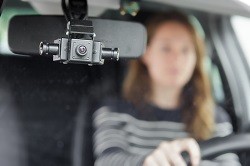UDRIVE while we watch
We’ve all heard the warnings: texting while driving leads to accidents, sometimes serious ones. In fact, many types of distracted driving causes you to take your eyes off the road and, as a result, puts you, other drivers, pedestrians and cyclists in danger. But just how dangerous is distracted driving? Consider that in 2014, 25 700 people died on EU roads – that’s the equivalent of 70 deaths every day. Additionally, there are thousands of road-related injuries too. Clearly, something needs to be done. But before policy makers can enact sensible measures for improving traffic safety, a better understanding of the problems and their causes is needed. This is exactly what the EU-funded UDRIVE project set out to do. An innovative data acquisition system UDRIVE is a large-scale naturalistic driving study designed to increase understanding of road user behaviour and help meet European road safety and environmental targets. This innovative, technology-driven method offers added value over traditional traffic safety research methods such as driving simulations, self-reports and crash investigations – all of which have significant limits to how transferrable their findings are to real-life conditions. Naturalistic driving research allows researchers to actually watch driver behaviour in real traffic conditions. The UDRIVE project was designed to generate new knowledge on three key road safety topics: the main causes of crashes, distraction and inattention, and driver interaction with vulnerable road users such as pedestrians and cyclists. To do this, the project used in-vehicle cameras, allowing researchers to track every action and reaction of the 285 participants. ‘Our objective was to gain insight into real, natural driving behaviour’ explains Project Coordinator Nicole van Nes from the Dutch Road Safety Research Institute SWOV. ‘This data allows us to gain insight into questions that cannot be studied in an experimental or laboratory setting.’ In the UDRIVE study, participants used their own vehicles, allowing them to drive their cars, trucks and scooters naturally. The project used a specially designed data acquisition system connected to seven or eight unobtrusive cameras installed throughout the vehicle. Each vehicle was also equipped with a smart camera capable of automatically identifying nearby objects, such as cars, trucks and pedestrians. The data acquisition system delivered a constant flow of vehicle information, kinematic data and videos, allowing researchers to read the vehicle behaviour. ‘This system provides a really good look at what’s happening in and around the vehicle,’ says van Nes. Filling the safety gap Researchers next turned to analysing the immense amount of data collected, with a focus on understanding the interaction between a driver and cyclists and pedestrians, along with pinpointing and dissecting safety-critical events, near-misses and crashes. Although currently putting the final touches on their findings, van Nes is confident they will soon be able to provide best practices for mitigating common driving risks. ‘Our data will shed light on issues that we currently have limited knowledge about, such as mobile phone usage, when, where, in which conditions, risky behaviours and drivers' behaviour towards pedestrians and cyclists,’ says van Nes. ‘By identifying where drivers typically fail, we can fill these safety gaps with new solutions, thus making Europe’s roads safer.’ Public authorities will likely use the UDRIVE findings to develop measures for enhancing road safety by improving infrastructure and education. Likewise, industry can use UDRIVE evidence to develop safety-enhancing products, such as advanced driver-support systems and autonomous driving features.







